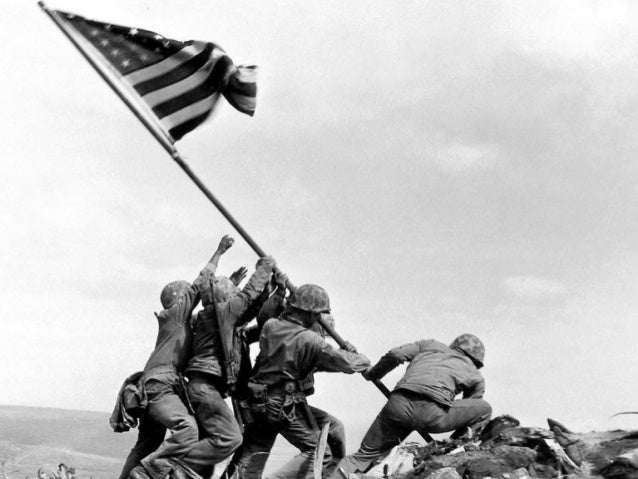During World War II, photographers who were not drafted, alongside the rest of the American society, pledged their support towards the war effort, in favor of democracy and the prosperity of the United States. War documentation was also popularized by the developing trend of social documentary photography, which had started during the Great Depression. The service of documenting soldiers in the war was mainly meant to support and advertise the nation's democratic ideals and values. During World War II, the photography of Americans affirmed the widespread, shining image of the United States as the land of the free.

To protect this image, the Government placed a large amount of censorship on the media. General Dwight Eisenhower wrote, "[Photographers] have a job in war as essential as the military personnel… fundamentally, public opinion wins wars." Censors banned photographs of dead American boys, images that "portrayed the American military in an unfavorable light," and even. at times, photographs of African-American participation in the military. These strict rules were nonnegotiable, forcing the press to not only agree to the restrictions for the news but also distribute handouts and military photographs. This served as a platform for the Government to directly deliver war propaganda to its citizens. However, almost two years into the war, President Franklin Roosevelt and the War Department reversed the regulations due to the high business-labor tensions and opposition to higher taxation. Roosevelt thought that the country needed to see the casualties in order to understand what was really at stake. The new guidelines began in September 1943, allowing photographs of American soldiers bleeding, dying, and dead to finally be revealed. These images formed a public realization of the reality of war.

Furthermore, the intercontinental nature of World War II presented a set of challenges to photographers including expense, transportation, and communication. Fortunately, the technology developed in WWI such as Long-range airplanes and more compact cameras made delivery and processing of film and prints more reliable. Despite these advancements, photographers still worked to document all the fronts and provide content to all publications.


65 military photographers, cameramen, and darkroom technicians accompanied U.S. troops at the beginning of their operations abroad, but it wasn't until the Normandy D-Day invasion when the number of combat photographers reached 100. During the entire war, military combat photographers produced over half of a million pictures to The U.S. and British media. Overall, it is confirmed that at least 37 photographers were killed, 112 were wounded in action, 8 were torpedoed, 50 were imprisoned, and 67 contracted malaria. Their bravery and sacrifice are indisputable.








3 comments:
Very interesting article! It's helpful to understand how risky it was to take photos during the war. Back then photography was a lot harder then nowadays, so it's seems like being a photographer would be a hard but interesting job. It's interesting how much of an impact photography made on the war, very similar to social media and the impact it has on the world today. Also, it's interesting to think about how the government restricted photos back then but nowadays our president is abusing social media.
The bravery of these photographers is incredible. The casualties you listed are saddening, especially because photographers are seldom mentioned in casual discussion about World War II. However, they played a very important role in creating the government's desired image of the war. Today, it would be much harder to censor such images because of widespread use of social media.
What an amazing story of these people that the public never saw but were just as influential in winning the war effort as anyone else fighting. Some of the videos we've seen have gotten so close to the action that they must be putting themselves in incredible danger. One thing confused me - are you saying they were drafted, or the photographers all volunteered?
Post a Comment